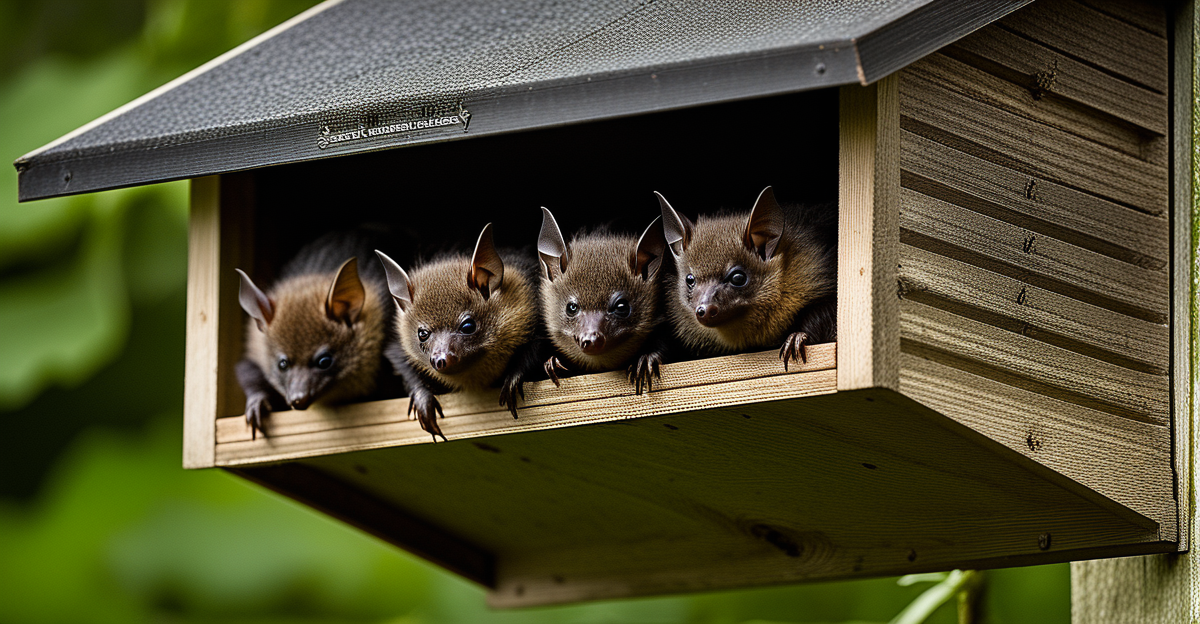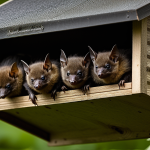Understanding the Importance of Bats in UK Gardens
Bats play a crucial ecological role in the UK, with over 18 different bat species contributing significantly to their habitats. Bat habitats extend across urban and rural settings, where they serve as essential components of wildlife conservation. Notably, bats are natural pest controllers, voraciously consuming vast quantities of insects such as mosquitoes and moths, which benefits gardens by reducing the need for chemical pesticides. Some bat species also partake in pollination, fostering plant growth and diversity.
Conserving bats is vital due to threats like habitat destruction and declining insect populations. Gardens can become sanctuaries, supporting bat needs and enhancing local ecosystems. These efforts can significantly impact bat conservation, ensuring these animals continue their ecological roles. Bat-friendly practices can transform gardens into safe havens for these elusive creatures, aiding conservation in both urban and rural areas.
Also read : Discover Groundbreaking Approaches to Chronic Kidney Disease Care for Senior Cats
Participating in wildlife conservation by understanding and protecting bats in your garden promotes biodiversity and environmental health. For the UK, such actions drive successful conservation outcomes, maintaining a balanced ecosystem where bats thrive.
Creating a Bat-Friendly Garden
A bat-friendly garden is essential for encouraging these creatures to reside and thrive. Incorporating water sources, such as ponds or birdbaths, is crucial since bats often hunt near water due to the abundance of insects. Planting insect-friendly plants like evening primrose or honeysuckle is beneficial; these attract insects that serve as food for bats.
Also read : Definitive Pet Safety and Serenity Handbook for Guy Fawkes Night Fireworks
Minimizing pesticide use is imperative for supporting bat populations. Chemical pesticides can drastically reduce the insect populations bats rely on and may also harm bats directly. Instead, opt for organic or natural pest control methods to maintain a balanced ecosystem in your garden.
Enhancing your garden’s ecosystem by incorporating native flora is equally important. Native plants are well-adapted to the local environment, requiring fewer resources and attracting more native wildlife, including bats. Native hedgerows or wildflower borders are excellent choices for creating a wildlife-friendly garden.
By adopting these wildlife-friendly practices, you can transform your garden into a sanctuary for bats, providing them with the resources they need to thrive while contributing to broader wildlife conservation efforts.
Building and Installing Bat Boxes
Creating safe habitats is crucial for supporting bat populations in your garden, and bat boxes are an excellent solution. These structures provide shelter, making them essential tools in bat conservation.
Materials and Tools Needed
To construct a bat box, gather these materials: untreated wood, preferably cedar or pine, is ideal due to its durability. You’ll need screws or nails, a saw, measuring tape, and a drill. Importantly, avoid treated wood as it can be harmful to bats.
Step-by-Step Construction Guide
Begin by cutting the wood into the necessary pieces: backboard, front panel, roof, and sides. Join them using screws or nails. Ensure there’s a narrow entrance slit at the base, allowing bats easy access. Within, include a rough wooden surface for bats to cling to.
Best Locations for Bat Boxes
Place your bat box at least three metres off the ground in a sunny spot, ideally facing south or southeast. This positioning ensures optimal warmth. Ensure it’s away from obstructions like branches to facilitate unimpeded flight and boost the likelihood of bat occupancy. Regular monitoring will inform conservation efforts and gauge the box’s success in attracting bats.
Monitoring Bat Activity in Your Garden
Monitoring bat activity can offer insights into the success of your wildlife conservation efforts and contribute to a broader understanding of local bat populations. There are several effective techniques for observing and identifying bat species in your garden.
Observational Techniques
Spend time in your garden during dusk when bats are most active. Look for their characteristic flight patterns and listen for their high-pitched calls. Observational notes can help determine which species are frequent visitors.
Using Technology
To enhance your bat monitoring, consider using bat detectors. These devices translate the echolocation calls of bats into audible sounds, helping identify different species. Certain models of bat detectors can even record these calls, providing valuable data for further analysis.
Importance of Regular Tracking
Regularly tracking bat activity provides insights into the impact of bat-friendly practices. Not only does this information help refine conservation strategies, but it also contributes to larger datasets useful for researchers and wildlife organizations. Additionally, engaging in bat surveys with local groups can bolster communal efforts in protecting these essential creatures and their bat habitats. Such involvement enriches your understanding and fosters greater appreciation for these remarkable animals.
Additional Resources and Support for Bat Conservation
Supporting bat conservation efforts in the UK can significantly enhance your garden’s ecological balance while aiding local wildlife. An array of bat conservation resources are available to help you. Begin by exploring materials and guides offered by wildlife organizations such as the Bat Conservation Trust, which offers a comprehensive suite of practical advice and participation opportunities. Their resources range from facts about different bat species to guides on making your garden bat-friendly.
Community Initiatives and Programs
Local and national community initiatives play a crucial role in fostering bat-friendly environments. Many programs encourage participation in citizen science projects, where you can contribute by reporting bat sightings or participating in bat surveys. Such involvement not only contributes to scientific research but also strengthens community bonds focused on ecological preservation.
Engaging with Local Conservation Groups
For personalized support and active involvement, consider joining local conservation groups. Volunteering with these organizations allows you to work directly on projects aimed at wildlife conservation and bat protection. These experiences can be both educational and rewarding, offering insights into bat behaviours and effective conservation methods. Through these channels, you can expand your impact, ensuring bats continue to thrive in your area.










